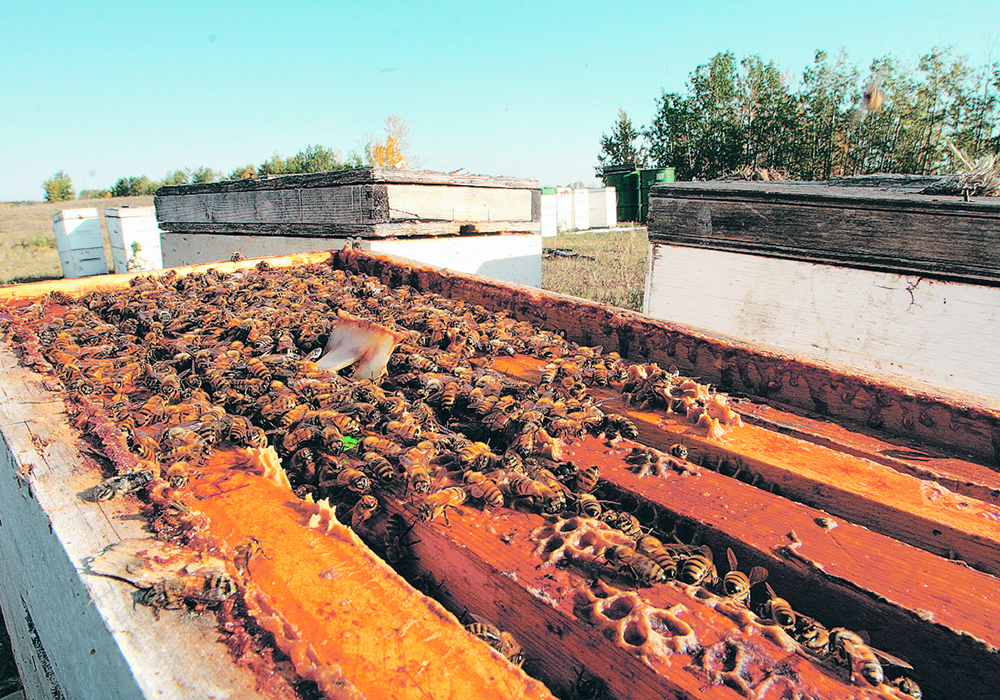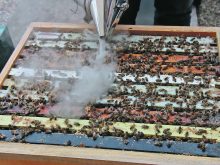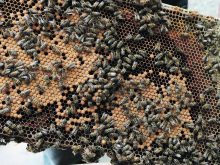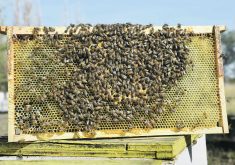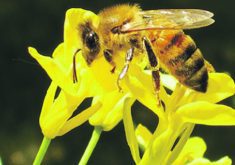Winter was longer and colder than normal last year, but varroa mites were the main cause of hive losses on most apiaries
Beekeepers in Alberta, the province with the most honeybees in Canada, may have lost 50 percent of their hives this winter.
In Manitoba, the losses are even worse, as 57 percent of bee colonies didn’t survive the winter.
The estimates are based on a survey of Canadian beekeepers conducted every spring by the Canadian Association of Professional Apiculturists (CAPA).
On Jeremy Olthof’s beekeeping operation, near Tees, Alta., less than a third of bee colonies survived the winter.
“I lost 70 percent,” said Olthof, president of the Alberta Beekeepers Commission.
The winter of 2021-22 was longer and colder than normal, but varroa mites were the main cause of hive losses on most apiaries.
The parasite weakens bees and spreads viruses between colonies.
“In our operation, we didn’t get a mite treatment quick enough (last year)…. And the population just exploded during the honey flow,” Olthof said. “What really got us, is we’ve had a couple of years of higher mite levels.”
Mite pressure was so high, Olthof had many hives that didn’t make it to the winter.
“We were seeing hives crashing in the fall,” he said. “I was down 10-15 percent (for hives), before I even went into winter.”
Nationally, about 45 percent of bee colonies failed to survive the winter, based on CAPA estimates. That’s double the losses in the winter of 2021, when 23 percent of bee hives did not survive.
The 45 percent figure is one of the worst on record for colony losses in Canada. Typically, losses of 15-20 percent are considered acceptable.
The CAPA figures aren’t surprising because beekeepers in many parts of Canada have been reporting severe colony losses since April.
“The total loss for our operations between last fall and spring was around 50 percent,” said Lorne Prins of the Gull Lake Honey Co. near Lacombe, Alta. “And if I just lost 50 percent of my colonies, it would be one thing, but a lot of the remaining colonies are quite weak, so it’s not a great position to be in.”
Beekeepers imported a huge number of bee packages this spring, to compensate for the lost hives and rebuild their operations.

Olthof received 500 packages of bees and received help from some of his fellow beekeepers. They split their healthy hives, then offered the split hives to Olthof and other apiaries.
“The industry did rally and help each other out.”
Despite those efforts, the number of bee colonies in Alberta will decline in 2022.
Last year there were about 310,000 hives in the province. Olthof estimates the number will drop to 275,000 this year.
That’s significant because Alberta has about 40 percent of all the honeybee colonies in Canada.
Colony numbers in other provinces may also drop, which will cut into honey production in 2022.
On the positive side, there’s no longer a drought on the Prairies and honey output, per hive, may increase this summer.
As well, honey prices are around $3 per lb., which is likely an all-time high.


